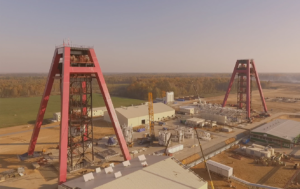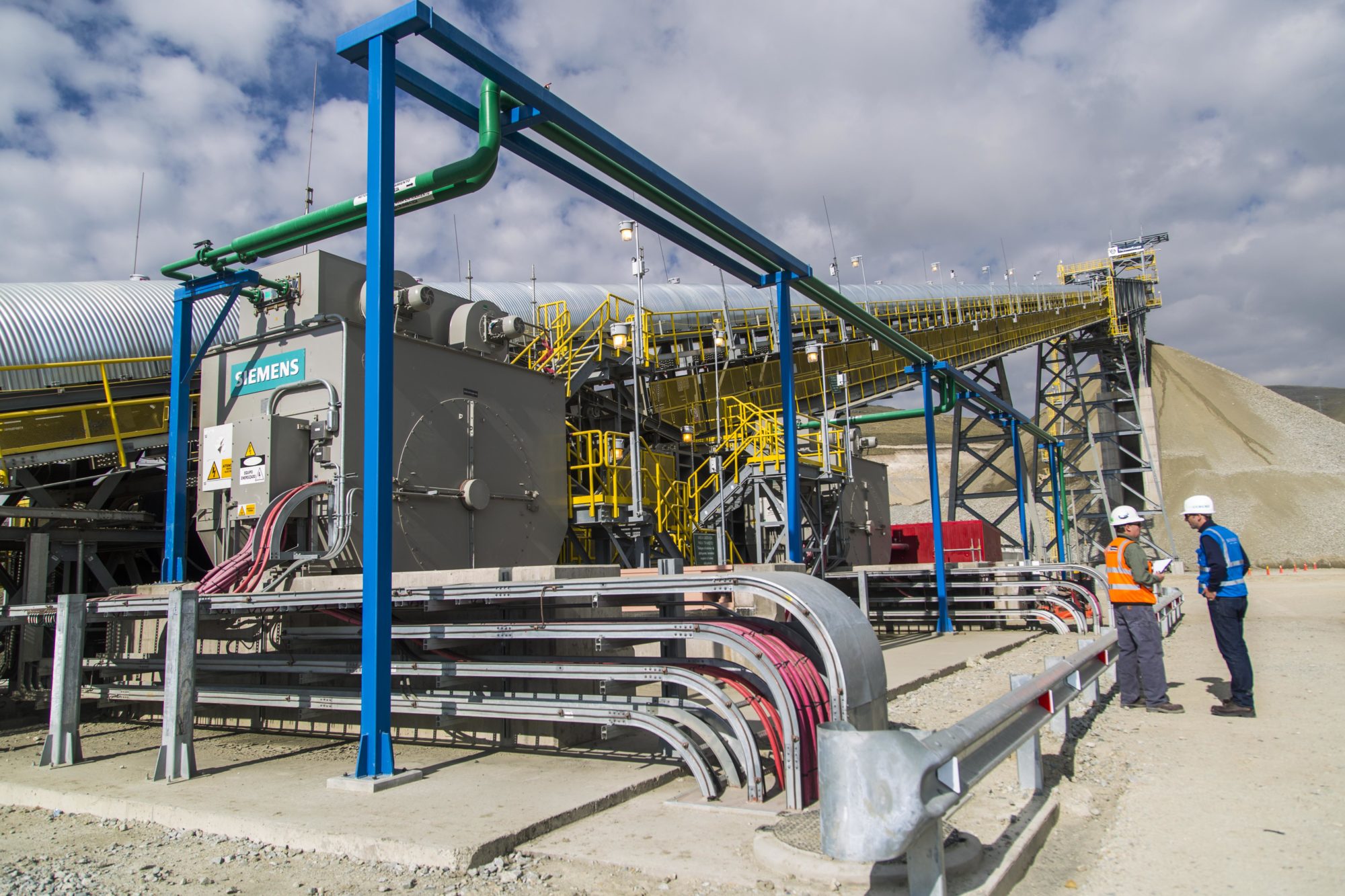Powering some of the world’s largest mining conveyors, grinding mills, hoists and trolley assist truck fleets, Siemens has an enviable reference list and depth of experience. IM Editorial Director, Paul Moore spoke to Christian Dirscherl, VP for Mining, Excavation and Transport about its multiple market successes and continued potential going forward

Q Starting with large conveyors with gearless drives, Siemens has a unique set of application examples – can you give a brief overview and thoughts on how you have been able to achieve this depth of experience?
Our list of gearless drive installations for large overland and underground conveyors continues to grow including a number of the world’s leading copper mines: Antapaccay, Las Bambas, Escondida OGP1, Quellaveco, Oyu Tolgoi, Cuajone plus a copper mine in Tibet, China. Quellaveco, Oyu Tolgoi and the project in Tibet are all still in the installation and commissioning phase. In terms of contract wins – the continuity of our major orders – seven world class gearless driven conveyor projects in less than ten years – has been a factor. Plus we have continued to set records both for the power of the systems – Cuajone and the mentioned copper mine in Tibet are both 2 x 6,000 kW and Oyu Tolgoi is 8 x 5,500 kW – and the climatic extremes – the minesite in Tibet at over 5,000 m altitude. Plus, it has involved many of the world’s top tier miners with very exacting performance and safety standards – Rio Tinto, Glencore, MMG, Southern Copper (Grupo Mexico) and BHP. Also I would mention the continuity in our team – many of the same experienced Siemens people have worked on several of the projects together. And having a series of projects has allowed us to make continuous improvements in areas like cooling, leading to greater standardisation of our solution. Another relatively recent change that will allow us to grow this market further is that before we worked exclusively with thyssenkrupp and while our close relationship with them continues, we are now in a position to work with any major conveyor system OEM or contractor and in fact are already doing so.
Q Has the pandemic had any effects?
There have been some difficulties and delays as would be expected due to COVID-19 – there is a lot of specific expertise involved in these types of mining infrastructure projects so travel restrictions have had an impact – near the start of the pandemic, as an example, Mongolia had imposed a 25-day quarantine. Plus there are often restrictions on travelling between regions within the same country and on top of that many mines have restricted access to contractors and suppliers. Currently, for Oyu Tolgoi we are providing services remotely while at Quellaveco we have teams onsite. The pandemic has also slowed activity in terms of new feasibility/pre-feasibility studies though with the current high price of copper there are several major projects now on the horizon.
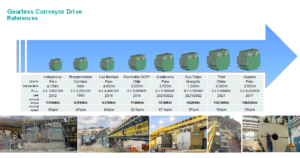
Q As an example can you highlight the scope of the Quellaveco project?
The new thyssenkrupp conveyor at Anglo American’s Quellaveco advanced development copper mine in Peru will transport 127,500 t/d of ROM copper ore to the stockpile adjacent to the copper concentrator. The conveyor will get from one valley to another through a 3.2 km long tunnel. Our input includes twin 5.5 MW gearless drives operating at a design tonnage of almost 11,000 t/h as well as the e-house with MV and LV power distribution plus a cooling system for the motors and e-house. The automation of the conveyor system will use our process control system Simatic PCS-7.
Q Technically, why are gearless drives having such a big impact in the market for the world’s largest mining conveyors? Is the technology now being considered as a first option?
It has been well proven that for these large capacity and high torque drive conveyors, the gearless drive enables efficiency to be increased by 3%, but beyond this it cuts down the necessary maintenance work and associated costs, as wearing parts such as couplings, motor bearings and gearboxes are no longer required. Plus, it reduces energy consumption and CO2 emissions. And you are right – on our reference list with the exception of Oyu Tolgoi which was only really possible with gearless drives – all the others have involved trade off studies between conventional and gearless with gearless coming out on top. The references plus the seamless performance of these installations, with no serious issues to date at any of the installed projects – means mining companies with large projects having a major overland conveyor element are now looking to gearless first whereas before it was seen as a relatively new and untested solution. To quote one of our South American customers: “Whenever it is possible I would like to replace every geared system to gearless.” The only issue today is that gearless still involves a higher initial investment so in some cases it may not be suited to a short life mining project eg less than ten years.

Q Is real time analysis going to play a major role in material conveying going forward?
It is increasingly something major miners are asking for, with the greater focus on areas like in the pit ore sorting and ore characterisation in the mine up to the stockpile stage before it gets to the plant. We signed an agreement back in 2018 with MineSense to combine their BeltSense on-conveyor analysis solution with the Siemens Simine MAQ single material and quality management system to enable customers to significantly increase efficiency via a single view of quality across the whole conveying process. A stockpile installation at a copper mine in British Columbia will represent the first time we will have worked together on a full project.
Q Moving on to grinding mills – what would you highlight there as the key factors in Siemens gearless success plus are there any milestones you would single out?
We installed the first mill Simine GMD in 1980 and are now approaching 100 installations for ore grinding mills. Even though the global COVID-19 pandemic led to delays or postponement of larger projects worldwide, we were still able to win several major contracts during 2020/2021 in Southeast Asia and Central America. And within that total number is included a number of industry firsts. I would highlight the world‘s first gearless drive for a SAG mill in 1988 at Chuquicamata and the first 40 ft mill GMD at Cadia in 1998 and the first GMDs at an altitude above 4,000 m at Antamina in 2011. In 2016 we also set a record at one project with six of the highest powered 40 ft GMDs ever built on AG mills at the CITIC Pacific magnetite iron ore project in Australia. Also notable is the rugged outdoor version of Simine GMD which has been successfully in operation since 1998. The outdoor version design takes into account tough environmental conditions as well as the absorption of solar radiation. In more recent years, the advancements in asset health analytics (AHA)/condition monitoring and further digitalisation of elements like our SINAMICS closed-loop drive control system and PCS7 process control system have taken these mill GMD installations to another level again. After successfully starting up nine Simine GMDs in 2020, we will commission a further eight Simine GMDs through 2021 for multiple expansion projects and a greenfield mine in Indonesia, Chile and Peru, all of which can avail of these latest digitalisation advancements. Today, these systems are integral to the grinding circuits of our customers to avoid any kind of unplanned shutdowns by incorporating AHA based on anomaly detection, mathematical models and AI algorithms. And as mentioned there is now a lot of market activity – Antofagasta alone is expanding Los Pelambres and building a new Centinela concentrator as an example. We are also seeing a lot of project activity in Russia on the back of the successful 2020 start-up of six Simine GMDs for a copper mine in Chelyabinsk, which are currently the largest in operation in Russia. On technical aspects of why our GMDs have succeeded in the milling market – there are many reasons but two to highlight would be round-the-clock reliability and availability based on mature technology like our rugged ring motors and fuseless cycloconverters, and of course our process of continuous improvement like enhanced control for better overall operation including reducing reactive power draw during start-up, inching and creeping.
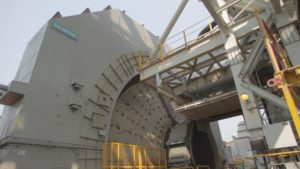
Q Are there any downsides to GMDs in mill circuits?
Not in terms of performance. Again, higher initial CAPEX cost can be an issue for some projects, plus the installation time is longer. In both GMDs for conveyors and for mills, they tend to be best suited to larger and longer life mining projects, partly due to the ROI relating to less maintenance OPEX and fewer stoppages plus increasingly the fact they are much more energy efficient. It is helped by the fact that many mines are switching to all or at least a majority of renewable energy use. These are high speed, high torque applications without a complex gearbox attached. Ring-gear, pinions, motor bearings , couplings and gearboxes using several stages are needed for conventional drives at these projects, all with losses in efficiency due to mechanical resistance.
Q Moving on to mobile equipment, how would you summarise your market presence there?
Siemens Commercial Vehicles through the Siemens Mining Mobility division provides electric drive solutions for numerous mining applications, ranging from 3.5 t underground utility vehicles to 450 t class haul trucks as well as shovels and draglines. It includes various topologies ranging from traditional diesel/electric, hybrids with onboard energy storage, up to complete battery electric. To take one example, we have dominated electrical solutions both on and off truck in the mining trolley assist market in which we have been active since 1981. Today, four Siemens Trolley systems are operating with trucks of several types between 180 t and 360 t load capacity including Barrick Lumwana, FQM’s Kansanshi & Sentinel in Zambia and Swakop Uranium’s Husab in Namibia. We also currently have three projects for new trolley systems running on three different continents ranging from 800 m to 4,000 m. Our offering is the Siemens Truck Trolley System Sicat® TT which is AC-based, converting DC power from overhead lines using IGBT inverters controlled by a SIBAS control unit. High flexibility and modularity are features of this logically-structured system – which ensures easy adaption of the system to any customer requirements. Individual aspects of a mine‘s operation and the existing infrastructure can be channelled into the system during the design phase. Siemens not only offers the individual components necessary for catenary installation and truck conversion, it also assumes the role of turnkey systems supplier responsible for project planning, installation, commissioning, maintenance, and the training of local personnel. Using an AC drive system, there is no speed limit for a truck entering or connecting to the trolley lines. Combining an AC drive system with a Siemens trolley feeding system maximises the operation flexibility and efficiency. I think it is also worth mentioning across a number of mining applications that Siemens equipment like converter and inverter cabinets are very strong and capable of withstanding extreme shock and vibration. Since the water-cooled designs require no external air input, Siemens cabinets are sealed against harsh mining environments.
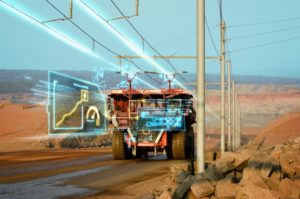
Q Trolley assist with battery and all battery electric are two options the big miners are looking at. Where is Siemens in terms of bring these solutions to market?
Back in April 2019, the Siemens Mining Mobility team already presented during your International Mining The Electric Mine conference in Toronto the electrical configuration plus the results of various simulations, investigations and physical tests for a full electric driven haul truck based on an onboard battery in combination with trolley assist. This combination of onboard batteries with trolley assist allows a continuous operation without any stops to charge batteries. During downhill and trolley assist operation the battery will be charged so that the truck has during the entire cycle electrical energy on board to move the vehicle. Besides that, the solution generates the following benefits: 16% productivity increase, 46% energy cost decrease/year, 32% lifetime cost decrease, lower maintenance costs and zero carbon gas emissions (no engine). In the meantime Siemens has also developed a fully electric mining truck drive system which will be presented to the market soon. Our advantage is that we have our own in-house components and systems like trolley assist, AC drives plus the know how to design batteries for high power application and integrate them on haul trucks.
Q Finally on mining hoists – what trends are you seeing and what major projects from Siemens would highlight?
We are seeing two trends in the mine hoist market, one being a much greater fail-safe focus and the second being cybersecurity – so both safety related ultimately. The cybersecurity aspect relates to the greater impact of digitalisation in mining but related to that the protection of access to these systems. On projects we have been working closely with the hoist supplier OLKO, part of Thyssen-Schachtbau. As part of this collaboration we have achieved the successful delivery of the complete electrical package for Anglo American’s Woodsmith polyhalite project in the UK and the Slavkaliy potash project in Belarus. These projects included the electrification, drive system and automation with the latest developed SIL-3 winder technology controller, or WTC, for the shaft hoisting systems. At Woodsmith, the polyhalite will be hoisted from approximately 1,450 m at a hoisting speed of 18 m per second (m/s). The delivery included a medium-voltage synchronous motor with an output of 9.3 MW and a torque of 1,550 kNm for each machine which are powered directly from a medium-voltage Sinamics SM150 (PWM) frequency converter. We have also partnered closely with SIEMAG TECBERG and FLSmidth for example on a number of hoist projects and on hoisting automation technology development. The fact that our solutions are derived from a standardised, SIMATIC-based control and safety system in the form of the winder technological controller makes all conceivable versions of drive and control systems technologically possible. The WTC can be used in new plants as well as to modernise existing facilities. The current WTC system is an integrated solution. The WTC allows for control of all types of hoists such as friction (Koepe) winders, single and double drum winders, high performance production winders and personnel transportation winders. It offers maximum safety and reliability. The WTC-hardware consists of a double channel system based on Siemens SIMATIC S7. That means all functions and modules are embedded in an automation system using worldwide proven standard components. And aside from new hoist projects, we also do a lot of modernisations and refurbishments.
